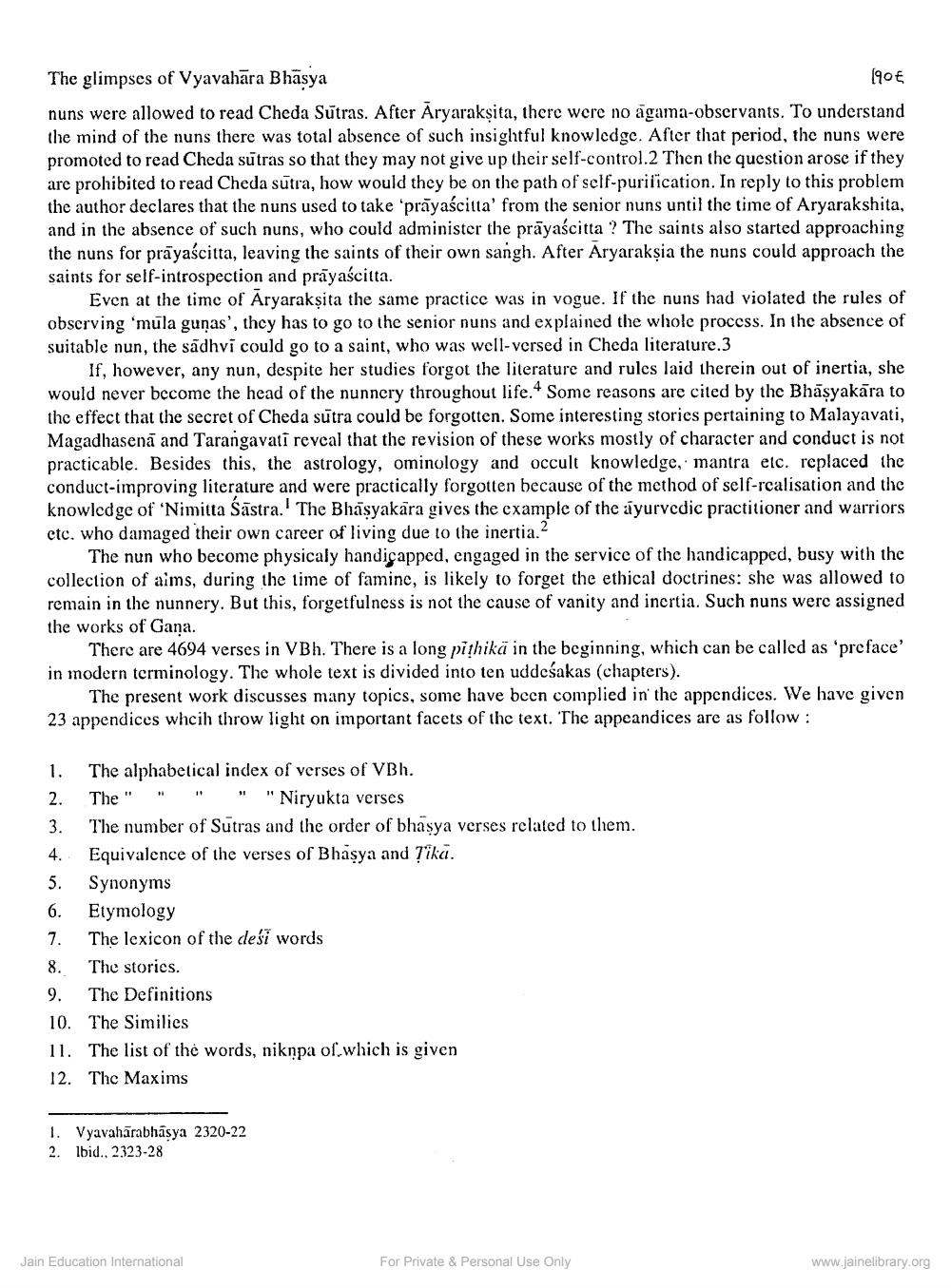________________
The glimpses of Vyavahāra Bhasya
૧૦૬ nuns were allowed to read Cheda Sūtras. After Aryarakṣita, there were no agama-observants. To understand the mind of the nuns there was total absence of such insightful knowledge. After that period, the nuns were promoted to read Cheda sutras so that they may not give up their self-control.2 Then the question arose if they are prohibited to read Cheda sutra, how would they be on the path of self-purification. In reply to this problem the author declares that the nuns used to take 'prāyaścitta' from the senior nuns until the time of Aryarakshita, and in the absence of such nuns, who could administer the prayaścitta ? The saints also started approaching the nuns for prāyaścitta, leaving the saints of their own sangh. After Aryarakṣia the nuns could approach the saints for self-introspection and prāyaścitta.
Even at the time of Āryarakṣita the same practice was in vogue. If the nuns had violated the rules of observing 'mula gunas', they has to go to the senior nuns and explained the whole process. In the absence of suitable nun, the sādhvi could go to a saint, who was well-versed in Cheda literature.3
If, however, any nun, despite her studies forgot the literature and rules laid therein out of inertia, she would never become the head of the nunnery throughout life. Some reasons are cited by the Bhāsyakāra to the effect that the secret of Cheda sutra could be forgotten. Some interesting stories pertaining to Malayavati, Magadhasena and Tarangavati reveal that the revision of these works mostly of character and conduct is not practicable. Besides this, the astrology, ominology and occult knowledge, mantra elc. replaced the conduct-improving literature and were practically forgotten because of the method of self-realisation and the knowledge of 'Nimitta Šāstra.' The Bhasyakara gives the example of the ayurvedic practitioner and warriors etc. who damaged their own career of living due to the inertia.?
The nun who become physicaly handicapped, engaged in the service of the handicapped, busy with the collection of aims, during the time of famine, is likely to forget the ethical doctrines: she was allowed to remain in the nunnery. But this, forgetfulness is not the cause of vanity and incrtia. Such nuns were assigned the works of Gana.
There are 4694 verses in VBh. There is a long pithikā in the beginning, which can be called as 'preface' in modern terminology. The whole text is divided into ten uddesakas (chapters).
The present work discusses many topics, some have been complied in the appendices. We have given 23 appendices whcih throw light on important facets of the text. The appeandices are as follow:
1. The alphabetical index of verses of VBh.
The " " " " "Niryukta verses 3. The number of Sutras and the order of bhasya verses related to them. 4. Equivalence of the verses of Bhasya and ?ikā. 5. Synonyms 6. Etymology 7. The lexicon of the desi words 8. The stories. 9. The Definitions 10. The Similies 11. The list of the words, niknpa of which is given 12. Thc Maxims
1. Vyavahārabhāsya 2320-22 2. Ibid., 2323-28
Jain Education International
For Private & Personal Use Only
www.jainelibrary.org




